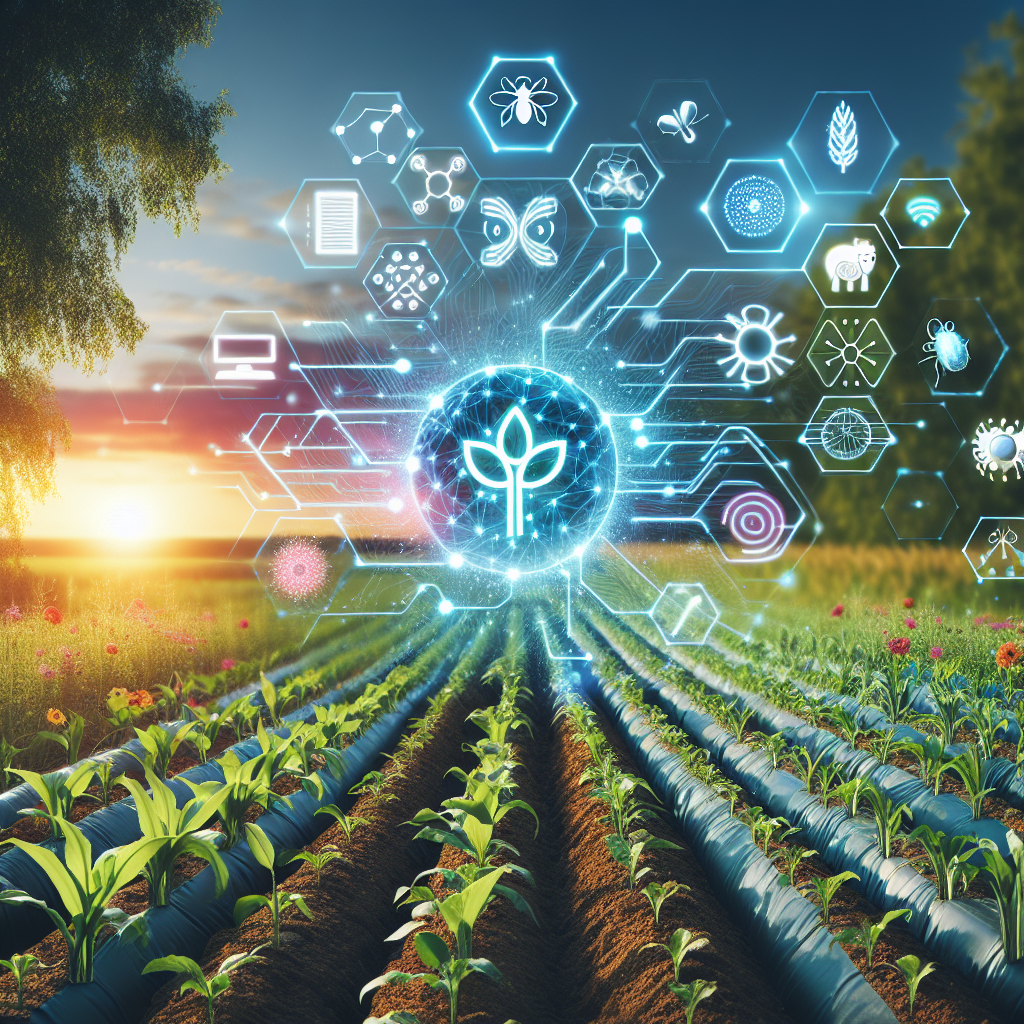AI Technologies for Pest-resistant Crop Development
Introduction
Pests are a major threat to crop production worldwide, causing significant economic losses and food insecurity. Traditional methods of pest control, such as chemical pesticides, have negative environmental impacts and can lead to the development of pesticide-resistant pests. In recent years, there has been a growing interest in using AI technologies to develop pest-resistant crops that can withstand pest attacks without the need for harmful chemicals. This article will explore the various AI technologies being used for pest-resistant crop development and their potential benefits.
AI Technologies for Pest-resistant Crop Development
1. Machine Learning
Machine learning is a branch of AI that focuses on developing algorithms that can learn from and make predictions or decisions based on data. In the context of pest-resistant crop development, machine learning algorithms can be used to analyze large datasets to identify patterns and predict which genes or genetic variations are associated with pest resistance. This information can then be used to breed crops with enhanced pest resistance.
For example, a team of researchers at the University of California, Davis used machine learning algorithms to analyze the genetic makeup of thousands of rice varieties to identify genes that confer resistance to the rice blast fungus. By identifying these genes, researchers were able to develop new rice varieties that are more resistant to this devastating disease.
2. Deep Learning
Deep learning is a subset of machine learning that uses artificial neural networks to model complex patterns in large datasets. Deep learning algorithms have been used in pest-resistant crop development to analyze genetic data and predict which genes are likely to confer pest resistance. These predictions can then be validated through laboratory experiments and used to breed crops with enhanced pest resistance.
For example, researchers at the International Rice Research Institute (IRRI) used deep learning algorithms to analyze genetic data from over 3,000 rice varieties to identify genes that confer resistance to the brown planthopper, a major pest of rice. By identifying these genes, researchers were able to develop new rice varieties that are more resistant to this pest.
3. Genomic Editing
Genomic editing is a technology that allows researchers to make precise changes to the DNA of an organism. This technology has been used in pest-resistant crop development to introduce or modify genes that confer resistance to pests. One of the most widely used genomic editing technologies is CRISPR-Cas9, which allows researchers to make targeted changes to the DNA of a plant.
For example, researchers at the University of California, Berkeley used CRISPR-Cas9 to introduce a gene from the wild tobacco plant into tomato plants. This gene confers resistance to the tobacco hornworm, a major pest of tomato plants. By introducing this gene into tomato plants, researchers were able to develop new tomato varieties that are more resistant to this pest.
Benefits of AI Technologies for Pest-resistant Crop Development
1. Reduced reliance on chemical pesticides: By developing pest-resistant crops using AI technologies, farmers can reduce their reliance on chemical pesticides, which can have negative environmental impacts and lead to the development of pesticide-resistant pests.
2. Increased crop yields: Pest-resistant crops are less likely to be damaged by pests, leading to increased crop yields and higher profits for farmers.
3. Improved food security: By developing pest-resistant crops, researchers can help ensure a stable food supply and reduce the risk of food shortages caused by pest outbreaks.
4. Sustainable agriculture: AI technologies for pest-resistant crop development can help promote sustainable agriculture practices by reducing the use of harmful chemicals and promoting environmentally friendly pest control methods.
FAQs
Q: How long does it take to develop pest-resistant crops using AI technologies?
A: The timeline for developing pest-resistant crops using AI technologies can vary depending on the complexity of the pest resistance trait and the crop being developed. In some cases, researchers have been able to develop pest-resistant crops in as little as a few years, while in other cases, it may take longer to identify the genes or genetic variations associated with pest resistance.
Q: Are pest-resistant crops safe for human consumption?
A: Yes, pest-resistant crops developed using AI technologies are subject to rigorous safety assessments to ensure they are safe for human consumption. Regulatory agencies around the world, such as the Food and Drug Administration (FDA) in the United States and the European Food Safety Authority (EFSA) in Europe, have established guidelines for the safety assessment of genetically modified crops, including pest-resistant crops.
Q: Will pest-resistant crops lead to the development of super pests?
A: There is a risk that pests may evolve to overcome the resistance traits in pest-resistant crops, leading to the development of super pests. To mitigate this risk, researchers are developing strategies to deploy multiple pest resistance traits in crops and rotate crops with different resistance traits to prevent the buildup of pest populations.
Conclusion
AI technologies have the potential to revolutionize pest-resistant crop development by enabling researchers to analyze large datasets, predict which genes are associated with pest resistance, and develop new crop varieties with enhanced pest resistance. By developing pest-resistant crops, researchers can help reduce the reliance on chemical pesticides, increase crop yields, improve food security, and promote sustainable agriculture practices. As AI technologies continue to advance, the development of pest-resistant crops is likely to become more efficient and effective, leading to a more resilient and sustainable food supply for future generations.

